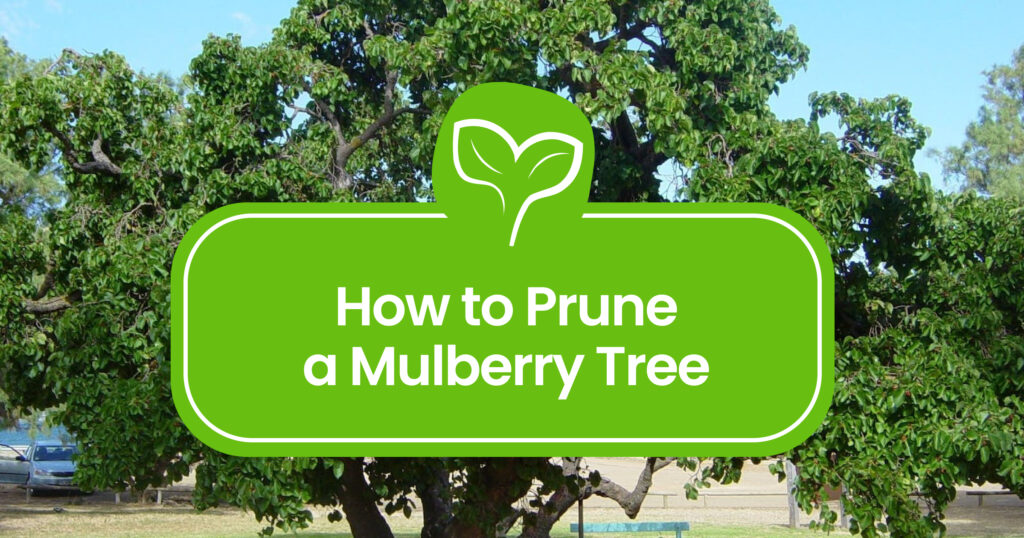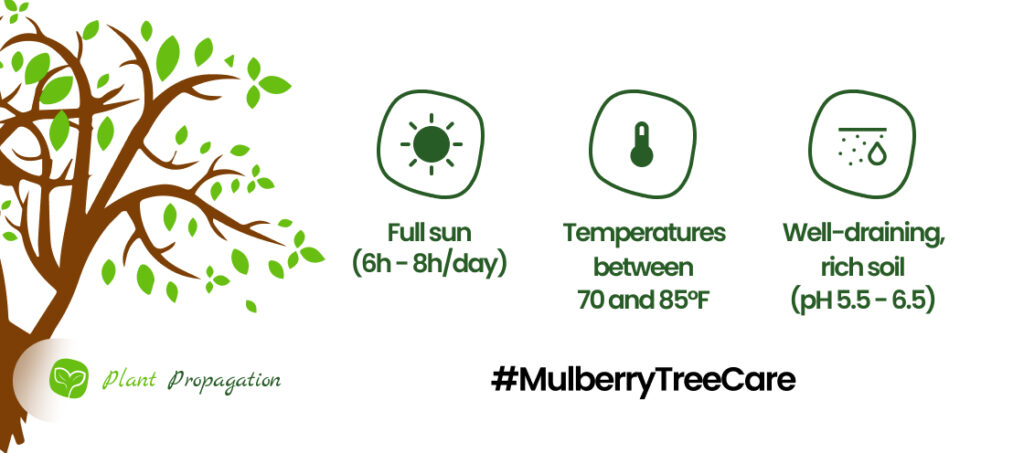
Let’s learn How to Prune a Mulberry Tree the right way! Pruning these majestic trees isn’t just about size containment or convenient harvesting; it’s about nurturing their health and promoting abundant fruit yields. In this guide, we’ll explore the intricacies of pruning mulberry trees, from understanding why it’s essential to know when and how to wield those pruning shears.
From encouraging robust growth to safeguarding against diseases, pruning isn’t a mere annual chore for these low-maintenance beauties. Delve into the realms of health-oriented pruning techniques and size control strategies that ensure your mulberry tree remains a manageable, flourishing delight in your garden.
Why Should You Prune Mulberry Trees?
Many people prune their Mulberry trees mainly to keep their size contained and the fruits at a reachable height so they do not need to use a ladder when harvesting time comes. Pruning has other benefits too: It encourages healthy growth, ensures sturdy branches, and boosts fruit production.
Mulberry trees are pretty low-maintenance, thus they do not need annual pruning. Pruning them every 2 years in the winter is perfectly fine.
Pruning for Health
When you are pruning for health (in winter about a month after the leaves have fallen), you want to concentrate on removing any diseased or damaged branches. Doing so will help your Mulberry tree to focus its energy on healthy growth and increased fruit yield.
Usually, you do this during the winter, about a month after all the leaves have fallen, but dead branches can be removed anytime. Just make sure you clean your tools to avoid any infection!
Pruning to Control Size
Sometimes, our mulberry friends grow a bit too exuberant. That’s where size control comes into play. Pruning helps you guide their growth, keeping them neat and manageable. You want to focus on branches that cross each other or grow in the wrong place.
When to Prune Mulberry Trees
Timing is everything, especially in the world of pruning. The best time to prune Mullberry Trees is late Winter. In the cold season, your tree is much better protected against fungi and disease and can heal its wounds faster. Remember! Larger cuts (above 2″ in diameter) heal slower, and Mulberry trees are prone to bleeding.
The Tools You’ll Need
Let’s gear up! Pruning might seem like a job for the pros, but with the right tools, it’s a breeze. Here’s your hit list:
- a pair of sharp pruning shears for smaller branches
- loppers for thicker branches
- a pruning saw for the big-league cuts
- safety gloves
- safety goggles

How to Prune a Mulberry Tree Step-by-Step
Alright. You have all your gear, Winter is here, and you want to prune your Mulberry tree for health and also to keep it in top shape. Let’s go through the steps of pruning Mulberry Trees.
-
Start by removing dead branches: Dead, Diseased, and Damaged. You neet to get rid of them all. For smaller branches, you can use your pruning shares, but you might need to use your loppers for larger ones. Just make sure they are all clean and sharp.
Remember! Mulberry trees have difficulties healing cuts on branches larger than 2″ in diameter. When pruning full branches, you want to cut as close to the trunk as possible.
- Thinning it out: To maintain a balanced shape for your mulberry tree, remove overcrowded or crossing branches, aiming for a uniform spacing of 6–8 inches between branches. Eliminate closely spaced shoots and branches sprouting below the main mass for a tidy and appealing appearance.
Remember, it’s all about balance. You’re sculpting, not performing a drastic makeover! Also, disinfecting your tools with some bleach solution after you are done with the pruning is a must.

Aftercare
Right after pruning, you want to keep an eye out for any signs of stress or infection (diseases or pests). If you’ve done the pruning in the winter, you should be fine. Mulching around the base can help your tree retain moisture, so that would be the thing to actually do after pruning.

Wrapping It Up
Congratulations, you’re now a certified mulberry tree pruning pro! With these simple steps and a dash of love, your tree will flourish, offering delicious fruits and a picturesque charm. Here as the main takeaways:
- Purposeful Pruning: Pruning for mulberry trees isn’t just about size control; it’s a health-boosting practice that enhances fruit production.
- Winter Vitality: A strategic winter pruning routine, targeting diseased or damaged branches, revitalizes the tree’s health and growth.
- Balanced Growth: Mastering the art of thinning and spacing branches ensures an aesthetically pleasing and tidy appearance, maintaining a 6–8-inch spacing for optimal tree balance and charm.
Frequently Asked Questions
What is the best time to prune mulberry trees?
The best time to prune Mullberry Trees is late Winter. In the cold season, your tree is much better protected against fungi and disease and can heal its wounds faster. Remember! Larger cuts (above 2″ in diameter) heal slower.
Will a cutdown mulberry tree grow back?
Mulberry trees are resilient—they have this knack for bouncing back, regrowing into a full-blown tree even from just a mere stump.
How do you prune a mulberry bottom?
When you are pruning your Mulberry tree, you want to start with the bottom. Prune away shoots that are too close together, and also remove the ones that grow below the majority of the branches.
Will pruning help improve the fruit yield of a mulberry tree?
Mulberry trees do not need much pruning, but if you remove dead or damaged branches in late Winter (or very early Spring), your tree can focus its energy better on growing fruits. Remember! Over-pruning will hinder fruit yield on any tree.

